
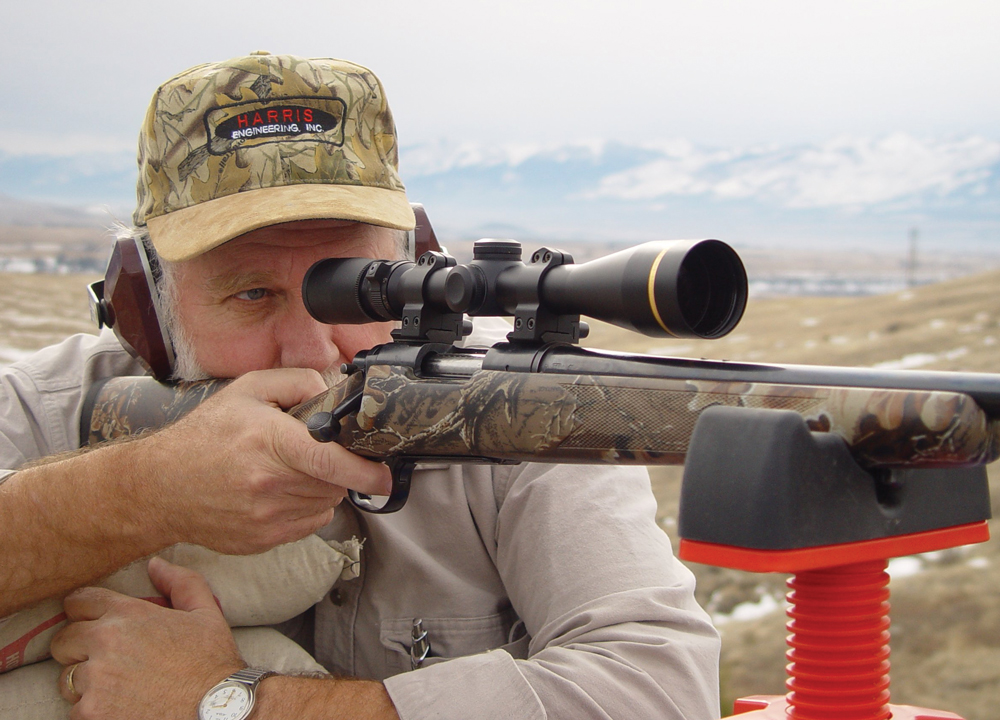
Want to be a better rifleman? First, disregard these common rifle shooting myths.
Rifle Shooting Myth 1: Damaged Bullet Points Hinder Accuracy
Down through the years, many gun writers have warned shooters that flattened and damaged bullet points can severely affect shooting accuracy. The issue is one primarily a product of cartridges having been stored inside the magazine of a heavy-recoiling rifle.
In such a case, when the rifle is fired, the cartridges sometimes are forced forward, causing the bullet points to impact the front of the magazine, thereby resulting in the flattening of the soft lead points. Over the years, it seems that many shooters have accepted the pretense that such imperfections can cause a bullet to go astray in flight. Until a few years back, I had no way of either validating or discrediting those claims, so, I decided to find out for myself how large a problem this really was.
I began by severely damaging the bullet points of a diverse variety of cartridges. Those cartridges were then shot along with an equal number of pristine, undamaged cartridges at 100 yards. Test rifles were sandbagged front and back to ensure the maximum degree of steadiness.
Without getting into a great deal of detail, I will only say that, at 100 yards, the amount of accuracy deterioration was so slight that I don’t believe any shooter under normal field conditions would notice the slightest degree of difference between the damaged and undamaged bullets.
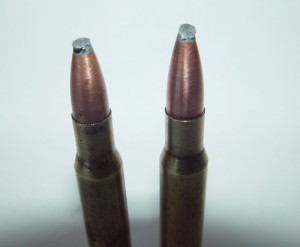
Of course, whenever the aerodynamic lines are disrupted, a decrease in the bullet’s ballistic coefficient would result, and that would translate into slightly poorer trajectories and a reduction in the bullet’s ability to resist the effects of the wind. But, in most cases, and with the exception of shooting at extremely long range, I feel the consequences would be minimal.
What I believe to be a larger potential problem is the fact that the same heavy recoil could result in driving the bullets deeper into their cases. If this should occur, it could result in elevating chamber pressures. The best way to prevent this from occurring would be to tightly crimp the case mouths around the bullets.
Rifle Shooting Myth 2: My Bullet Hit a Twig!
I’ve often heard hunters attempt to justify a missed shot because the bullet clipped a small limb or twig on its way to the target. Even the legendary Jack O’Connor occasionally used this as an excuse for a failed shot. It’s certainly logical that a bullet encountering an obstacle could be disrupted, but I was at a loss to as to how serious a problem this could be.
In an effort to find out, I constructed a type of wooden manifold, wherein I inserted a series of hardwood dowels to simulate limbs. The dowels were positioned close enough together to ensure that a bullet traveling to a paper target on the other side would be sure to contact at least one.
Three calibers were selected for testing, the .300 Win. Mag., .30-30 Winchester, and .22-250 Remington. Because of the current variety of .308-caliber bullets, three different bullet weights and styles were shot in the .300, with one style for each of the .30-30 and .22-250.
I began with doweling measuring 3⁄16-inch and placed the obstruction 10 feet in front of the target. In my first rounds of testing, and in all calibers, the amount of deflection was nearly indistinguishable. So, next, I increased the dowels to ¼-inch and moved the obstruction 30 feet from the target.
This increased group sizes, but still not substantially. Of course, as the size of the object struck increases or the distance between the obstruction and the target is increased, you should expect a greater degree of deviation. The important thing here is that shooting through grasses and fairly light vegetation should not be problematic for a hunter, as long as the game is a reasonable distance behind the interfering obstacle.
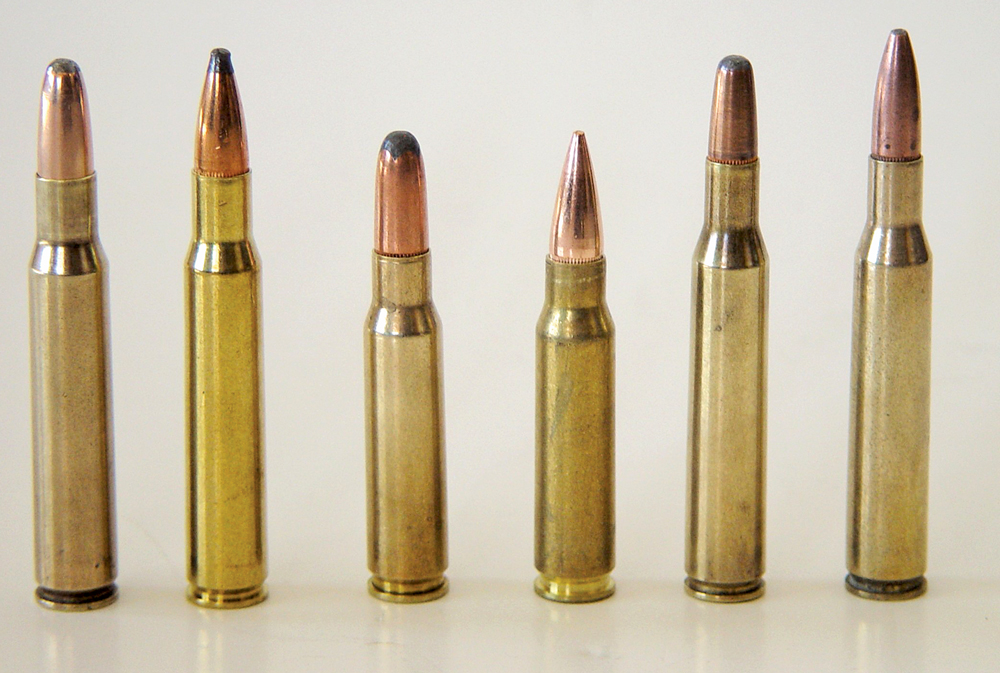
Rifle Shooting Myth 3: Round-Nose Bullets Penetrate Deeper and are Better in Brush
My previously mentioned bullet deflection tests included both pointed and blunt-nosed bullets. After seeing no noticeable difference in the amount of deflection between the two, I decided to take the tests one step further and see if blunt-nosed projectiles had either or both a tendency to penetrate deeper or retain a higher level of retained weight when shot into a bank of old magazines.
You have to be a bit careful, when drawing a conclusion like this, because both these traits are closely related to the quality and construction of the bullets.
Nevertheless, as long as the bullets were of the same high-quality construction, I saw nothing in these tests to indicate that a round- or flat-nosed bullet would perform any better. Pointed bullets routinely carry a higher ballistic coefficient and, for that reason, will buck the wind better and shoot flatter at long range.
That makes it an easy choice in my own mind, regarding which bullet style to shoot. As long as you aren’t shooting a rifle with a tubular magazine that requires the use of blunt-nosed bullets for safety reasons, my choice will always be pointed projectiles.
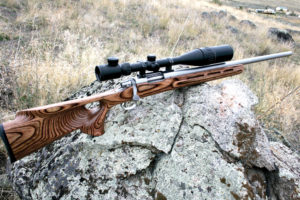
Rifle Shooting Myth 4: Stainless Guns Require Less Maintenance
The trend in firearms clearly seems to be away from the classic blued ones and in favor of those being marketed as stainless. But, a big misconception comes into play, when a person thinks these stainless in appearance firearms are impervious to rust.
In reality, they are every bit as susceptible to rusting as a blued gun—it may take a little longer for the rust to take hold, but rust they will, if proper precautions aren’t taken. The reason this happens is based on the fact that, while the gun metal may look like stainless steel, it really isn’t stainless at all.
Because of this, it is advisable to take the same precautions to prevent rust on both blue and these so-called “stainless” guns. The best protection comes from thorough cleanings and frequently wiping down the metal surfaces with an oil-soaked rag.
Rifle Shooting Myth 5: Bore-Sighting is a Good Way to Get Your Rifle Zeroed
Bore-sighting a firearm should never be considered an alternative to actual live-fire zeroing on the range.
Just because the center axis of the barrel may be perfectly aligned to the crosshairs of your scope does not necessarily mean that your bullet will follow that same line of flight. In fact, it rarely does. Bore-sighting should be used only as an intermediary step, after which actual live-fire shooting should follow to fine-tune the adjustments.
But the usefulness of a boresight is not limited to only getting your initial shots on paper. Once you have completed the sighting-in process, you should take another reading, followed by recording that relationship on paper. That way, if your gun gets bumped hard or dropped, you have an easy way to confirm that no ill effects have occurred.

Rifle Shooting Myth 6: I Always Let Someone Else Sight-In My Rifle
Some shooters who have a tendency to be recoil-sensitive may be inclined to let someone else sight in their rifle for them. This should, however, never occur. There are several advantages to sighting-in your own rifle.
First, it gets the shooter used to the recoil of the rifle, and, second, it familiarizes them with the gun. But aside from those very valuable advantages, it is important to recognize that differences in how people actually see things can effect where the bullets will impact on a target.
Different shooters shooting the same rifle and ammunition will quite often have their bullets impact at a different point on a target.
Rifle Shooting Myth 7: A Clean Firearm is a Better Firearm
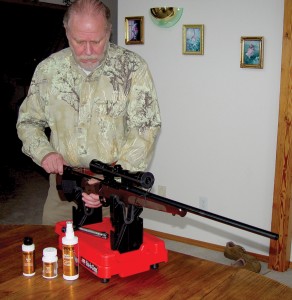
How could anyone make an argument against firearm cleanliness? Well, I can think of only a single instance when a little dirt might be a good thing, and that is inside your gun barrel when it comes to heading out for a hunt.
One of the factors necessary for consistent shot placement has to do with the consistency of the firearm bore. Simply put, a round fired through a clean bore will almost always impact at a different point that those shots that follow—and that first shot is often the most important you will take in a hunting situation.
I have frequently found the amount of variation can be from about an inch all the way up to three or four inches at 100 yards. If you never shoot past 50 yards, this might not be an issue of concern, but, if you find yourself trying to pull off a shot at a record-book bighorn ram on that once in a lifetime hunt at 400 or 500 yards, it could easily become a substantial problem to overcome.
I like to remove all the variables I can and, in so doing, I always send a round down the barrel and foul the bore before heading out to hunt.
Rifle Shooting Myth 8: I Always Carry My Rifle Muzzle Down in the Vehicle
When traveling, it has become a common practice for many shooters to position their rifle with the muzzle down against the floorboards. I suppose most believe that placing their rifle in this position provides a degree of safety, but there is a problem in doing so.
The condition of the barrel crown is crucial to good accuracy. Floorboards, particularly in hunting rigs, are frequently dirty, and this dirt can easily result in a marring of the crown. A better way to carry a rifle in a vehicle is in a carrying case, but, sometimes a hunter likes to have their rifle more accessible (for obvious reason).
If you fall into this category, and as long as the rifle is unloaded with the action open and the muzzle is pointed in a safe direction and away from people, carrying it upright, muzzle towards the truck roof, simply makes good sense and can go a long way towards preventing damage to your rifle that can affect its accuracy.

Rifle Shooting Myth 9: My Rifle Shoots Better at Long Range
I have occasionally heard shooters purport that their rifle shoots more accurately at long range than at close range. This is simply untrue and cannot be.
One of the major factors in accuracy has to do with the yawing of the bullet. Yawing is when the back of the bullet begins to wobble in flight. This eventually results in the entire bullet moving about in a circular manner, as it makes its way to the target.
The theory is that the yawing eventually begins to settles down, resulting in a lessening of the size of the bullet’s circular movement. Nevertheless, whether the yawing is lessened in flight or not, when the bullet initially starts to oscillate, its destiny is then cast.
Having begun these movements, it is impossible for the bullet to lessen the size of its rotation and get itself back on a straight-line track. In reality, if your rifle is capable of shooting, say, a two-inch group at 100 yards, it won’t be capable of one-inch at 300 yards—in fact, under the best conditions, that same rifle will most likely shoot a six-inch group at that range.
Rifle Shooting Myth 10: You Can’t Beat Factory Ammo with Handloads
Without a doubt, factory loaded ammunition has never been better than it is today. A shooter has more choices in bullets styles and weights than were ever available in the past. But mass production can never equal attention to detail—and that is why factory loaded ammunition virtually always falls short in the area of accuracy and performance, when compared to handloads.
For years, it puzzled me why that was the case. The factory frequently loads the same bullets that handloaders use, using the same primers and cartridge cases, and, while the factory seldom divulges what types of powders they’re loading, I feel their choices are of equal quality to what handloaders use. I eventually decided to investigate the situation a little closer and began pulling the bullets from a wide variety of factory-loaded cartridges to check the weight of the powder charges.
I took five cartridges from each manufacturer and each load type, weighed the charges, and what I found shocked me. While most handloaders attempt to hold their charges to within plus or minus 0.1-grain or less, apparently the ammo factories aren’t so critical. To my surprise, the factory-load charge weights varied from a low of 0.5-grains all the way up to a whopping 1.7-grains! In most cases, I found the cartridges containing the heavier powder charges usually possessed the largest amount of deviation in their charge weights.
Also, it was the larger cartridges that typically contained the coarsest grained powders, which can pose a problems when it comes to metering accuracy. I wondered how such a slack standard could take place, so I followed up by contacting several mainstream ammo manufacturers and was told by each one that their powder charges are metered out in volumetric form, rather than being measured by weight.
Of course, the factories usually run their own in-house checks to make sure they fall within their own preset standards. But my issue is with what those standards are, when it comes to fluctuations in powder charge weight. I am quite sure that, if my own handloads contained powder charges that varied that much, my loads would be shooting on par with those of the factories.
This article appeared in the 2013 Annual Gun Digest book.

Next Step: Get your FREE Printable Target Pack
Enhance your shooting precision with our 62 MOA Targets, perfect for rifles and handguns. Crafted in collaboration with Storm Tactical for accuracy and versatility.
Subscribe to the Gun Digest email newsletter and get your downloadable target pack sent straight to your inbox. Stay updated with the latest firearms info in the industry.

![Best Concealed Carry Guns In 2025 [Field Tested] Wilson Combat EDC X9S 1](https://gundigest.com/wp-content/uploads/Wilson-Combat-EDC-X9S-1-324x160.jpg)


![Best 9mm Carbine: Affordable PCCs [Tested] Ruger Carbine Shooting](https://gundigest.com/wp-content/uploads/Ruger-Carbine-Shooting-100x70.jpg)
![Best AR-15: Top Options Available Today [Field Tested] Harrington and Richardson PSA XM177E2 feature](https://gundigest.com/wp-content/uploads/Harrington-and-Richardson-PSA-XM177E2-feature-100x70.jpg)

I have rifles that don’t require a fouling shot and some that do, especially when shooting cast bullets.
In regard to the yawing never stablizing, I disagree. In 1968 my best friend built a 25-284. He was shooting the 117-120 grain bullets and typically getting 3″ +/- groups at 100 yards with indications of the bullet tipping as it went through the target. The lighter bullets would barely hit the target. We tried all the little tricks we knew but to no avail.
Bill Prator was one of our gunsmith instructors at Trinidad so we went to him for advice. He suggested that we try shooting at 200 or 300 yards then get back to him.
Long story short, the groups at 300 yards were nearly identical in size to the groups at 100 yards. Prator’s explanation was that it was similar to a toy top when first spun, will wobble around then settle into smooth steady spin. He said that bullets react similarly since that is the purpose of rifling, to impose stability to the projectile, and if the projectile is pushed too hard for the existing situation the yaw can become quite extreme.
I have since then encountered this situation only once more with a 240 Weatherby and it was not quite as extreme but definitely the same situation. In this case we just down loaded a bit and ended up with a very high dollar 6mm REM.
I must disagree with you about the need to always foul the bore so the other shots will land in the same group. Over the last 60 years I have often oiled my bore after rigorous cleaning and then stored the gun muzzle down allowing the excess oil to run off. In most of my guns the first shot landed dead center in all the rest of the following shots.
I completely agree with Mr. Tabor’s assessments on all but the “Twig” myth. Especially Myths 6 & 7.
Good to see that someone actually tested and/or analyzed these myths, and presented them in easily understood explanations.
This statement, “Of course, as the size of the object struck increases or the distance between the obstruction and the target is increased, you should expect a greater degree of deviation. The important thing here is that shooting through grasses and fairly light vegetation should not be problematic for a hunter, as long as the game is a reasonable distance behind the interfering obstacle.”, contradicts itself: “… or the distance between the obstruction and the target is increased, you should expect greater degree of deviation.” versus “shooting through grasses and fairly light vegetation should not be problematic …, as long as the game is a reasonable distance behind the interfering obstacle.” Which is it, and what is Mr. Tabor’s definition of “reasonable distance”?
I disagree about the effect on the trajectory of a bullet after it hits an object based on my experience.
My most recent “flyer” was caused by the bullet hitting a stout blade of grass inches from the muzzle of my Match Rifle, and “throwing” my shot into the 7-ring (as much as 10-15 inches, or 3-5 MoA) on an NRA SR3 target at 300 yards. The other 19 shots were well within the 10- & 9-rings.
I was shooting a 68-grain BTHP Match bullet with MV of 3,100 fps.
This article could encourage hunters/shooters to disregard obstacles, and possibly wound an animal with a deflected bullet.
Regarding factory ammo vs. handloaded ammo accuracy; I found that generally, the runout of bullets in factory ammo is much larger than careful handloaders will accept and this can affect accuracy, especially beyond 100 yards. Careful handloaders strive for RO of less than .005″ with benchresters routinely getting .001″. The factory ammo I have measured ofter exceeds 010″ and this will show up on the target from a good rifle.
Dave
The article is a collection of unscientific, vague, general conclusions that in the end mean absolutely nothing. There are plenty of articles written by ballisticians that either scientifically confirm or refute these findings. As far as the military still believing the “myths” regarding the .45 ACP; as a combat veteran with over 22 years of service, I can say without a shadow of a doubt, that this is NOT a belief held by “the US military”.
No, the .45 ACP will not knock a man down or spin him around like a top. When fired at close range, however, it will break bone and do serious damage to internal tissue. Been there, done that. And noone who knows what he is doing will use it at long range. It was designed for one purpose, and when used for that purpose, is an excellent cartridge.
I will have to disagree with you on the statement that a gun will always impact differently if the bore is clean rather than fouled. Sixty some years of shooting has taught me that this is not always true as I have some varmint rifles in .220 Swift and 22-250 that impact exactly the same, regards as to whether the bore is clean or fouled
In the early 1900’s came the greatest woman hunter that perhaps ever lived, Agnes Herbert, who wrote three fascinating books about her 3 continent safaris. She stated that the gun writers of the time did not know what they were talking about (sound familiar?). She was one of the first people who taught people to shoot with both eyes open to the howls of protest from the then current gun writers.
She emphatically stated that large diameter elephant guns (which she used) killed no better than her small 6.5 mm Mannlicher rifle. And with legions of dangerous animals dispatched she certainly had enough experienced to know what she was talking about.
I prefer Leather. One of the least expensive leather IWB holsters I have for my concealed carry is very accessible and comfortable. Accessibility in my requirements for a cc holster is very high. Some of the more exotic style synthetics are great, especially for concealment but I have yet to find one that allows comfort and accessibility that my most inexpensive leather IWB holster provides.
I hope no one paid the author for these so called myths? Several of which I’ve never heard of in the sixty five years I’ve been sending 22cal thru 90mm rounds down range.
If the author was to take twenty rounds of 223 tracer and on a wet day fire them through the brush he would see just how full of holes his dowel theroy is. brush and twigs have a bad habit of growing at all angles 🙂
Quite a few years ago one gun writer finally got around to setting up a real life brush test along with a wooden dowel test. What he found out was the exact opposite of the previous long running myth that slow moving large caliber bullets got through brush better than high velocity small diameter bullets.
Of course lets not forget the greatest gun writer myth of all time and that was that the .45acp knocks a man down or spins him around like a top or makes him disappear in a red puff of mist. It is still believed by the U.S. military.